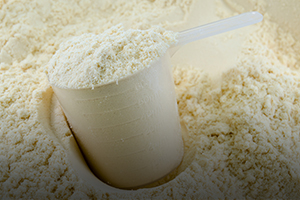Edible Packaging
 The United States Department of Agriculture recently developed an edible food packaging film that could cut down greatly on non-recyclable, non-biodegradable waste. The protein-based film is also up to 500 times more effective than petroleum-based plastics at preventing spoilage, and doesn’t leach potentially harmful compounds into the food.
The United States Department of Agriculture recently developed an edible food packaging film that could cut down greatly on non-recyclable, non-biodegradable waste. The protein-based film is also up to 500 times more effective than petroleum-based plastics at preventing spoilage, and doesn’t leach potentially harmful compounds into the food.
Most currently available edible packaging products are made from starch; however, their relatively porous molecular structure allows oxygen to seep through, causing food to spoil. The new film is made of a milk protein called casein, and has smaller pores that are more effective oxygen blockers. It also incorporates citrus pectin for added strength as well as resistance to humidity and high temperatures.
The product looks much like store-bought plastic wrap and has virtually no taste, but flavorings and nutritive additives like vitamins and probiotics could be added in the future. While its application is currently being tested as packaging for single-serving food wrappers such as cheese sticks, the protein-based material could also be sprayed on cereals in place of sugar coatings to prevent them from getting soggy in milk. The casein coating could also be laminated onto cardboard containers and plastic pouches, offering a safe, biodegradable alternative to the recently banned perfluorinated materials used in pizza boxes and other packaging. The developers anticipate that the new film will be hitting store shelves within three years.
For information: Peggy Tomasula, United States Department of Agriculture, Agricultural Research Service, Eastern Regional Research Center, 600 East Mermaid Lane, Wyndmoor, PA 19038; phone: 215-233-6703; email: peggy.tomasula@ars.usda.gov; Web site: https://www.ars.usda.gov/research/